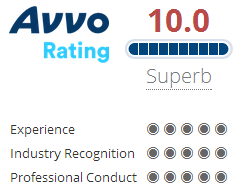Call Now 323-464-6700 for a Free Consultation
Law Offices of Jonthan Franklin - Blog
A driving under the influence (DUI) criminal charge plea bargain is an agreement between the prosecutor and the defendant, in which the accused pleads guilty to a lesser offense, resulting in a reduced sentence. It means less time in incarceration, fewer fines, less impact on your Department of Motor Vehicles record, and maintaining your driving privileges. Plea bargaining also comes with disadvantages, and choosing whether to take a prosecutor's offer depends on your case facts. For instance, a plea offer might be suitable if the prosecutor's case against you is weak. Your DUI defense lawyer can analyze the case facts, discuss available options, and guide you on the best course of action.
Upon your driving under the influence (DUI) conviction, the judge can place you on probation, which can be informal or formal. Formal probation requires supervision by the probation department, while informal probation does not. While probation allows you to be released back into society, it does not come with the same degree of freedom as a typical citizen. There are conditions you must meet to avoid probation violation proceedings. Please read this article to learn more about how DUI probation works in California.
California Driving Under the Influence (DUI) Charges carry severe penalties that adversely affect many aspects of your life, including freedom, driver’s license, finances, and career. One central element of the case that the prosecutor must show beyond a reasonable doubt is that you were driving or behind the wheel while intoxicated. The element forms the basis for the “no driving defense,” a strategy you can apply in the defense to prevent a guilty verdict or for a charge dismissal.
DUI enhancement laws can apply if you are convicted of driving under the influence, and the alcohol concentration in your blood during arrest was at least 0.15%. Driving with an excessively high blood alcohol concentration (BAC) or refusing to submit to a DUI test can attract enhanced penalties. The judge has the legal authority to increase your penalties by imposing extended DUI school programs, enhanced incarceration, and IID installation. Under the California implied consent law, every driver with a California driver's license must submit to DUI chemical tests. You will not face enhanced penalties if you refuse to submit to a preliminary alcohol screening (PAS) test or field sobriety tests (FSTs), but DUI chemical tests are mandatory. If you face charges for excessively high BAC or refusing to undergo a DUI test, you should seek the services of a skilled DUI attorney. An attorney can help you fight your charges and avoid enhanced penalties.
Driving under the influence (DUI) is a serious offense. After a conviction, you risk facing significant legal and collateral consequences. California Vehicle Code 23152 criminalizes operating a vehicle under the influence of alcohol. You could face an arrest and conviction for DUI if you drive with a blood alcohol concentration (BAC) of 0.08% or higher.
A law enforcement officer administers a breath test at the DUI stop, followed by a blood test after the arrest. DUI laws are straightforward. However, certain physiological conditions and lifestyle choices can complicate DUI testing, leading to potential miscarriages of justice. One such factor is the consumption of low-carbohydrate diets.
California is one of the states that has strict laws against DUI. These laws are in place to ensure the safety of the general public. If you have been charged with DUI, you want to know the complexities of the law, possible penalties awaiting you, and the legal defenses available. California prosecutors are highly aggressive when it comes to pursuing DUI convictions, while judges usually impose harsh consequences as a way to deter drunk-driving conduct. This blog provides a comprehensive overview of DUI laws in California to assist you in navigating the legal system and making informed decisions.
Navigating the legal complexities of a driving under the influence (DUI) charge can be a stressful and overwhelming process. However, that is understandable because the legal consequences you could face upon a conviction are grave, including suspension of your driver's license (DL), hefty fines, and sometimes even jail time. If you are under arrest for an alleged DUI offense, working with an attorney could help.
A skilled attorney can navigate the legal complexities of the charge, which often involves considering the available plea bargain as a strategic defense option. Agreeing to a plea deal with the prosecutor could help reduce the possible impact of a DUI conviction.
However, before negotiating a plea deal, your attorney must assess the facts of your unique DUI case to determine if this decision will work in your favor.
California Driving Under the Influence of Drugs (DUID) applies to illegal drugs, legal drugs, and over-the-counter (OTC) or prescription drugs. Therefore, you could face charges for DUI involving sleeping pills like Ambien, even if you were taking them for genuine sleep disorders. A drugged driving offense involving sleeping pills can be complex, as you could be unconscious or asleep while driving, making your conduct involuntary.
However, the Ambien argument is usually a weak assertion because you ingest the drugs knowingly despite a warning label about the risk of sleep-driving, making your actions voluntary intoxication. So, the defense strategy is ineffective and less likely to help you obtain a DUI charge dismissal.
A DUI-related conviction results in severe consequences that can affect several aspects of your life for many years. This is because a conviction record remains on your driving record for up to ten years after your arrest. You cannot remove it during this time, leaving it in plain view of entities that can change how they treat or serve you. For example, insurance providers can change your rate for auto insurance based on what they find in your driving record. The DMV and law enforcement officers will also see the record and can decide based on it.
Typically, DUI checkpoints are lawful in California. A police officer can stop and investigate you for driving under the influence of alcohol or drugs at a DUI checkpoint. Legally, these checkpoints are treated as other administrative inspection points, like airports, where legal screening is done to ensure safety. Thus, they do not violate the Fourth Amendment, which requires the police to have probable cause for stopping and investigating a person for drunk or drugged driving.
However, a DUI checkpoint must meet all the legal conditions to be considered legal. Otherwise, you can challenge your arrest after a DUI investigation at an illegal checkpoint. You can speak to a skilled attorney if you feel being stopped and investigated at a DUI checkpoint is unlawful. They will investigate the checkpoint and everything that happened to advise you on your legal options.














